We take an in-depth look into how Mazda MX-5 Coilovers work and recommend the best options for your car.
Fitting uprated coilovers to your Mazda MX-5 is one biggest fundamental changes you can do to your car. This will change how the car rides, feels in the corners and behaves during acceleration and under braking. There are a number of options on the market, each at different price points and each aimed at different driving styles.
What’s wrong with the standard suspension?
With some Mazda MX-5s getting on for 3 decades old now the stock suspension is more than likely worn out, with blown shocks and corroded or broken springs being some of the most common suspension issues. Aftermarket coilovers are a great way to refresh and vastly upgrade your failing stock suspension.
What are Coilovers?
The term Coilover describes a damper and spring setup where the spring is coiled around the damper, rather than there being a separate (also called divorced) spring and damper setup. However, the aftermarket has adopted the term to mean a coil-over-damper system that features height adjustment by winding the spring up or down a thread on the body of the damper.
Mazda MX-5 Coilovers Explained
The aftermarket options out there can be quite confusing, with different terms and buzzwords littering the marketplace, so we’ll first go through each of the commonly used terms below. While the amount of information here may seem daunting – it’s well worth understanding how each component affects what you want to do with your Mazda MX-5.
Single Perch vs Dual Perch Coilovers
A Coilover with a single perch will adjust the ride height based on the preload of the spring. This means if you want to go lower, you have to lower the spring perch down the damper shaft, and if you wanted to go higher, you’ll have to physically compress the spring to do so. This isn’t ideal for a number of reasons, the more preload you put on a spring the harsher and bouncier the ride. Also, because you’re dropping the spring to lower the ride height, the spring can become loose at the top of the damper and bounce around between the spring perch at the top mount.
Well engineered single perch systems will include a helper or tender spring that ensures the spring remains captured under full droop even with the car set at its minimum ride height.
A dual perch will also adjust the overall ride height but does so by having a threaded lower shock body that screws into the lower mounting cup. This allows you to twist the entire shock down into the lower cup, lowering the car without changing the preload on the spring. If you’re planning on lowering your car significantly, we would always recommend going for a dual perch set-up.
One of the core drawbacks of a dual perch design is the free air that you are left with after adjusting the coilover is not offering any benefit to the system. The damper is often 30% smaller, or more, compared with an engineered single perch design. Dual perch makes a lot of sense if you want to place the car at a generally particularly low ride height, that off the shelf single perch offerings don’t cater for.
|
|
|
Monotube vs Twin Tube Coilovers
Both of these shock designs use a combination of hydraulic oil, pressurised gas and a piston to absorb the energy coming from corners and bumps on the road. The internal pressurised gas helps to take up the initial shock of a bump or pothole, as this can be compressed much easier than oil. The oil then passes through a small hole in a piston to help to dissipate the energy entering the shock.
A monotube design uses the case of the shock to house all the gas, oil and piston and are all contained in a single tube. This design has the oil on top and the gas at the bottom, separated by a floating piston. The primary damping piston is connected to the damping rod and surrounded by oil.
A twin-tube design features a separate inner cylinder to contain the piston and uses the outer case as a of reservoir of oil and gas. This outer sleeve houses all of the gas and there is nothing separating them apart from the pressure of the gas.
A drawback of the twin-tube is that the mixture of gas and oil will aerate under hard use, reducing the damping effect of the oil. However, over time these will separate and is only an issue under continuous hard driving. On the other hand, a monotube has a floating piston separating the oil and gas so cannot mix the air and oil together; this gives a consistent dampening effect even under hard use.
Due to the construction of a twin-tube, they have a smaller diameter dampening chamber than the monotube. This reduces the amount of oil that can be held in the cylinder and means there is less oil to dissipate the energy coming from bumps on the road. The lower oil capacity can reduce the ability of the damping to work properly as the oil heats quicker during hard use, compromising performance.
However, the twin-tube will not be rendered inoperable by a small dent to the side of the cylinder, whereas a dent in a monotube may interfere with the piston. A useful trade-off in the world of rallying, for example.
Typically, Twin Tube Coilovers are ideal for cars that will rarely see competition or track use, they can handle spirited driving conditions over reasonable road surfaces but are less consistent than monotubes.
Depending on the damping rates and configuration of the assembly, a Mono-Tube design can deliver excellent road manners for a daily driver vehicle, typically airing on the sportier side of performance as a minimum. The higher performance and increased manufacturing costs does tend to push Mono tubes into the higher price brackets, but for track use, they are well worth it.
|
|
|
Fixed vs Adjustable Damping
Being able to adjust the level of damping allows you to tune how quickly or slowly the coilover reacts to load and will impact how much shock is absorbed into the suspension or into the chassis.
For a road car, you may want a relatively soft level of damping that absorbs the bumps from the road while allowing some body roll in the corners. Whereas for fast road or track use, you may want a stiff level of dampening to maintain more contact with the road while accepting a more crashy ride.
With an Adjustable damper setup, you have the ability to find a balance that suits your driving style and gives you the option to change the car’s behaviour for each discipline on the fly, for example, autosolo or track days.
On the other hand, fixed dampening coilovers normally come out of the boxing erring on the soft side and are generally set up for daily/fast road use. Due to the cost savings of removing adjustability, these tend to be in the lower-midrange price bracket and are a great option for solely road cars.
Linear vs Digressive Dampers Coilovers
Linear or digressive dampers describe how the damper reacts to different amounts of force at different speeds. A linear damper reacts in a very predictable fashion, easily absorbing small bumps while letting more energy into the chassis the harsher the bump. Digressive dampers, on the other hand, absorb more energy into the damper the harsher the bump.
What this means is that for slow changes, like leaning into a corner, a linear damper will be reasonably pliable, allowing a fair amount of roll in the chassis. Whereas large bumps—like going over kerbs—may allow too much energy to be transferred into the chassis, causing the entire car to become unsettled rather than allowing the car to simply skip over.
Digressive dampers, on the other hand, start off hard and plateau their dampening effect at the top end. In a long, sweeping corner the damper will be relatively stiff, allowing less oil through the piston and less body roll. On the large bumps, the damper will be able to quickly absorb energy without upsetting the car, allowing you to smash large curbs all day long. This comes at the cost of low-speed comfort, due to the low-end stiffness small bumps are easily felt in your back and this type of damper is really only recommended for >50% track cars.
In short, a digressive setup will have better road holding in spirited driving conditions and especially track day driving but be a harsher ride on the road. A quality linear set of coilovers with the correct spring rates will be more suitable for a road car that periodically sees the track.
What is Rebound and Compression Adjustment
Rebound describes how the shock returns from its compressed position back to normal, how quickly it does this is defined by the amount of oil that moves through the piston and how stiff the spring is that’s forcing the wheel back down into the ground.
Having a rebound setting that is too soft would give the spring a much easier time pushing the chassis back up, which would make the car feel bouncy on the road.
Compression describes how the shock handles being compressed, whether that’s a bump or a long sweeping corner. Finding the balance between the wheel and chassis bouncing off a bump and conforming to the road surface is the job of the damper.
Having the ability to adjust these options individually allows for the greatest control, many coilovers on the market have one adjuster which changes both in a ratio set by the manufacturer, usually giving the best of both worlds. For race applications, coilovers with external reservoirs have two adjusters which allow you to adjust the rebound and compression separately.
Rubber vs Pillowball Top Mount
As with all bushes, top mount bushes have the ability to move, which in turn soaks up vibrations and provides a dampening effect. Much like how you might want to upgrade to a stiffer poly bush engine or differential mount, moving to a pillowball mount removes that movement and replaces the rubber bush with a metal spherical bearing.
The top mount of the Coilover is where energy from the Coilover is transferred to the chassis but is also the place where NVH is transferred to the body. The vertical force is mostly taken care of by the spring and shock but the top mount still experiences lateral loads (i.e. side to side steering). The benefit of a pillow ball is the lateral loads are now being forced through the control arm bushes and tyres themselves, providing more consistent feedback to the driver.
If your control arm bushes are worn, this will put a significant amount of stress on the top mount bush as the bottom of the Coilover will have more movement than it should. This will mean both Pillowballs and rubber top mounts will have a tendency to not last as long, but a pillowball will suffer more for this. On a road car or a car with older bushes, a rubber mount is generally recommended. If you’re fitting a high-quality set of polybushes, a pillowball mount should outlast its rubber counterpart.
So, if you’re building a road-going car and want to keep NHV to a minimum, a rubber bush is the way to go. If you’re building a track car, or want as much road feedback as possible, a pillowball mount is a nice upgrade.
Spring Rates
The spring rate is how much weight it takes to compress a spring per a given distance. We lay our spring rates out in Kg/mm, so if you have a spring rate of 12Kg/mm, it’ll take 12kg of force to compress the spring 1mm. Spring rates for coilovers are laid out in two numbers, for example, 8/6 which means the front springs have a rate of 8Kg/mm and the rear 6Kg/mm. Typically, a soft road-going set of spring rates for the NA and NB will be around 6/5, a fast road/track day spring rate around 8/6 and a dedicated track or drift rate of 10/8+.
However, a 6/5 spring rate on an NA/NB does not act the same on an NC or an ND. This is due to where the spring is mounted to the arm in relation to the pivot point on the body and is called the motion rate. A spring that is mounted further out towards the hub can be softer than one mounted further inboard—due to less leverage being applied—whilst still maintaining the same effective spring rate at the wheel (helpfully known as wheel rate).
Helper Springs
Helper springs aren’t required on the majority of Coilover suspension designs for the Mazda MX-5 as their use is primarily to keep the primary spring seated at all times. If you’re using a single perch Coilover and planning on significantly lowering the car, then you may find you need helper springs to ensure the spring stays seated at all times.
Control Arms & Polybushes
A point of consideration when deciding on the right coilover / suspension setup for you, is also around the age and design of the control arm bushes. Standard Rubber bushes provide a large amount of low level / frequency damping as well as add spring rate to the system, as they resist the movement of the control arm – this sounds like a bad thing, but with a road car, with most off the shelf suspension, it stops the cars becoming crashy and busy.
Polybushes change the relationship and turn the system into effectively a bearing, with zero damping or spring rate – this makes the suspension work much harder and often asks a lot of the suspensions damping outside of the range it was tuned for – keep that in mind when making your choices, generally, the high end options (£1500+) are tuned for these frequencies.
What are the options?
We’ve separated out our recommended options for each budget.
Under £500 – OEM/Low-End Budget
At this budget, you’ll be looking at OEM replacements or budget aftermarket Coilovers.
Pedders
Pedders are an excellent choice for those wanting to retain the OEM ride qualities of the Mazda MX-5, but may want to lower the car. Pedder offers their “EziFit” option for a complete OEM replacement and their Lowered option for a slightly lower ride height.
| Spring Perch | N/A – Fixed |
| Tube Design | Twin Tube |
| Fixed/Adjustable Dampening | Fixed(OEM) |
| Dampening Design | Linear |
| Top Mount Design | Rubber |
| Spring Rate | OEM |
| Other parts required? | No |
| Recommended Application | OEM replacement |
Tein Basis Z
The basis Z is one of the cheapest coilover that still provides a sporty ride quality. It achieves this by using a single perch ride height adjustment and requires the reuse of the OEM rubber top mount.
| Spring Perch | Single Perch |
| Tube Design | Twin Tube |
| Fixed/Adjustable Dampening | Fixed |
| Dampening Design | Linear |
| Top Mount Design | N/A |
| Spring Rate | 7/6kg (Adjusts with height) |
| Other parts required? | Requires the reuse of OEM top mounts |
| Recommended Application | Normal Use/Fast Road |
-
-£52
£528.00Original price was: £528.00.£475.20Current price is: £475.20. inc. VAT Add to basket -
-£55
£552.00Original price was: £552.00.£496.80Current price is: £496.80. inc. VAT Add to basket -
-£55
£552.00Original price was: £552.00.£496.80Current price is: £496.80. inc. VAT Add to basket
£500-£700 – High-end Budget/Mid Range
At this price point, we start to get into the high-end budgets and solid mid-range choices.
Tein Advance Z
The Advance Z features the same fundamentals at the Basis Z, but adds adjustable dampening into the mix.
| Spring Perch | Single Perch |
| Tube Design | Twin Tube |
| Fixed/Adjustable Dampening | Adjustable |
| Dampening Design | Linear |
| Top Mount Design | N/A |
| Spring Rate | 7/6kg (Adjusts with height) |
| Other parts required? | Requires the reuse of OEM top mounts |
| Recommended Application | Normal Use/Fast Road |
-
-£60
£600.00Original price was: £600.00.£540.00Current price is: £540.00. inc. VAT Add to basket -
-£62
£624.00Original price was: £624.00.£561.60Current price is: £561.60. inc. VAT Add to basket -
-£62
£624.00Original price was: £624.00.£561.60Current price is: £561.60. inc. VAT Add to basket
MeisterR Sportive
The sportives are an excellent fit and forget road-going Coilover. This is the first Coilover on this list from MeisterR and the first to feature a dual perch spring setup. The sportives come with their own rubber top mounts but feature fixed dampening.
| Spring Perch | Dual Perch |
| Tube Design | Twin Tube |
| Fixed/Adjustable Dampening | Fixed |
| Dampening Design | Linear |
| Top Mount Design | Rubber |
| Spring Rate | 6/5kg |
| Other parts required? | No |
| Recommended Application | Fast Road |
-
-£28
£569.00Original price was: £569.00.£540.49Current price is: £540.49. inc. VAT Add to basket -
-£30
£599.00Original price was: £599.00.£568.99Current price is: £568.99. inc. VAT Add to basket
£700-£900 – The Sweet Spot
We believe this is the sweet spot price range, you’ll be getting all the toys such as adjustable dampening, dual perch spring and a very high-quality spring and shock without encroaching into the 4 figure territory.
Tein Flex Z
The flex Z provides great dampening qualities, has adjustable dampening and good ride quality at an affordable cost.
| Spring Perch | Dual Perch |
| Tube Design | Twin Tube |
| Fixed/Adjustable Dampening | Adjustable |
| Dampening Design | Linear |
| Top Mount Design | Pillowball |
| Spring Rate | 7/6Kg |
| Other parts required? | No |
| Recommended Application | Daily/Fast Road/Light Track |
-
-£81
£816.00Original price was: £816.00.£734.40Current price is: £734.40. inc. VAT Add to basket -
-£80
£804.00Original price was: £804.00.£723.60Current price is: £723.60. inc. VAT Add to basket -
-£80
£804.00Original price was: £804.00.£723.60Current price is: £723.60. inc. VAT Add to basket
Meister R ZetaCRD
The ZetaCRDs from MeisterR are a considerable step up from everything we’ve listed before. This is the first Coilover on the list to feature a monotube design and has a noticeable increase in build quality and ride quality
| Spring Perch | Dual Perch |
| Tube Design | Monotube |
| Fixed/Adjustable Dampening | Adjustable (32 Clicks) |
| Dampening Design | Digressive |
| Top Mount Design | Rubber |
| Spring Rate | 6/5Kg |
| Other parts required? | No |
| Recommended Application | Daily/Fast Road/Track |
-
-£50
£999.00Original price was: £999.00.£948.95Current price is: £948.95. inc. VAT Add to basket -
-£52
£1,049.00Original price was: £1,049.00.£996.44Current price is: £996.44. inc. VAT Add to basket -
-£52
£1,049.00Original price was: £1,049.00.£996.44Current price is: £996.44. inc. VAT Add to basket
BC Racing BR
The first offering from BC Racing, the BRs offer comparable performance and build quality to the ZetaCRDs but feature significantly more customizability; allowing you to chose your top mount material as well as spring rate.
| Spring Perch | Dual Perch |
| Tube Design | Monotube |
| Fixed/Adjustable Dampening | Adjustable (30 Clicks) |
| Dampening Design | Linear |
| Top Mount Design | Rubber or Pillowball |
| Spring Rate | Customizable |
| Other parts required? | No |
| Recommended Application | Daily Driver to full Track depending on options selected |
- -£55
- -£56
- -£54
£900-£1200- High End/Track Focused
MeisterR Clubrace
The clubrace is a more track-focused, high-performance coilover from MeisterR. They feature digressive dampening and the first from MeisterR to feature front pillowballs. The club races also feature a relatively high spring rate, ideal for track or autosolo applications. Another bonus for the club race is the extended damper stroke, giving more dampening ability on harsh bumps.
| Spring Perch | Dual Perch |
| Tube Design | Monotube |
| Fixed/Adjustable Dampening | Adjustable (32 Clicks) |
| Dampening Design | Digressive |
| Top Mount Design | Pillowball Front, Rubber Rear |
| Spring Rate | 12.5/7kg |
| Other parts required? | No |
| Recommended Application | Fast road/ Regular Track |
-
-£56
£1,129.00Original price was: £1,129.00.£1,072.43Current price is: £1,072.43. inc. VAT Read more -
-£60
£1,199.00Original price was: £1,199.00.£1,138.93Current price is: £1,138.93. inc. VAT Add to basket -
-£60
£1,199.00Original price was: £1,199.00.£1,138.93Current price is: £1,138.93. inc. VAT Add to basket
BC Racing DS
The DS series from BC Racing are a track-focused, degressive damper with a large piston and body diameter. This gives the Coilover more dampening ability and also more of a heat buffer before performance starts to degrade.
| Spring Perch | Dual Perch |
| Tube Design | Monotube |
| Fixed/Adjustable Dampening | Adjustable (30 Clicks) |
| Dampening Design | Degressive |
| Top Mount Design | Rubber or Pillowball |
| Spring Rate | Customizable |
| Other parts required? | No |
| Recommended Application | Full Track |
- -£60
- -£60
Tein Mono Sport
The Mono sports are Teins flagship road/track Coilover. Featuring adjustable dampening, high-performance oil and their patented two layer powder coating process to prevent corrosion.
| Spring Perch | Dual Perch |
| Tube Design | Monotube |
| Fixed/Adjustable Dampening | Adjustable (16 Clicks) |
| Dampening Design | Linear |
| Top Mount Design | Pillowball |
| Spring Rate | 10/8Kg |
| Other parts required? | No |
| Recommended Application | Fast Road/Regular Track |
£1200+ Flagship
BC Racing ER
The BC Racing ER is a flagship road/track external reservoir Coilover designed for maximum adjustability, ride quality and dampening.
| Spring Perch | Dual Perch |
| Tube Design | Monotube |
| Fixed/Adjustable Dampening | Adjustable (Rebound & Compression adjust separately) |
| Dampening Design | Linear |
| Top Mount Design | Pillowball |
| Spring Rate | Customizable |
| Other parts required? | No |
| Recommended Application | Daily Driver to full race depending on options selected |
- -£90
Ohlins
The cremé de la cremé of road/track coilovers, Ohlins are state of the art coilovers that aim for superior road handling without sacrificing comfort in day-to-day driving. More biased towards the road, the Ohlins are known to have the best ride quality on the market and are contained into a well-engineered fit and forgot damper solution.
| Spring Perch | Dual Perch |
| Tube Design | Monotube |
| Fixed/Adjustable Dampening | Adjustable |
| Dampening Design | Linear |
| Top Mount Design | Rubber |
| Spring Rate | 8.16/6.12 KG |
| Other parts required? | No |
| Recommended Application | Daily Driver/Fast Road/Track |
Supermiata / 949 Racing
These are the final word in marque-specific coil overs, while the Ohlins are indeed a great offering, they are comprised of high quality parts that are assembled to fit the Miata / MX5 Chassis, where as the Supermiata XIDA range are designed to maximize the potential of the chassis, with industry-leading travel and race-winning damper configurations. Specifying the right spring for your application is important to getting the right ride, just because these win races, doesn’t mean they arent also some of the most capable, compliant and responsive coilovers for the street too.
| Spring Perch | Single Perch |
| Tube Design | Monotube |
| Fixed/Adjustable Dampening | Adjustable |
| Dampening Design | Digressive |
| Top Mount Design | Pillowball / Billet |
| Spring Rate | 10kg/6kg / Fully Custom |
| Other parts required? | No |
| Recommended Application | Daily Driver/Fast Road/Track/Competition |
Supermiata Tecna
The last set on our list, take all the learning from the XIDA range and apply it to a long lived, steel construction set of shocks that have a true 120mm of damper travel and utilize all of the chassis dynamics available without breaking the bank. If you’re in the market for Ohlins, you’re probably actually in the market for these. The first fully featured set of shocks on the market engineered for all aspects.
| Spring Perch | Single Perch |
| Tube Design | Monotube |
| Fixed/Adjustable Dampening | Adjustable |
| Dampening Design | Digressive |
| Top Mount Design | Rubber |
| Spring Rate | 6kg/4kg / 9kg/6kg |
| Other parts required? | No |
| Recommended Application | Daily Driver/Fast Road/Track/Competition |
-
-£156
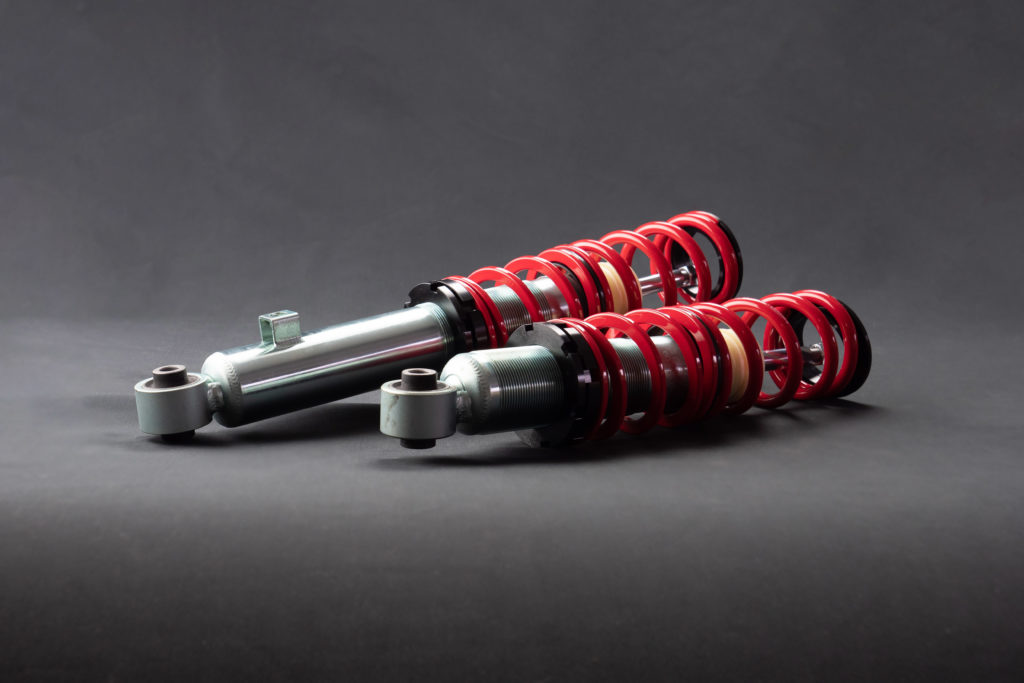



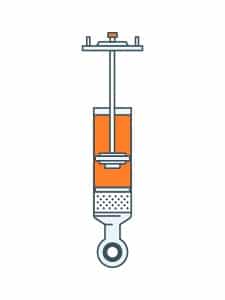



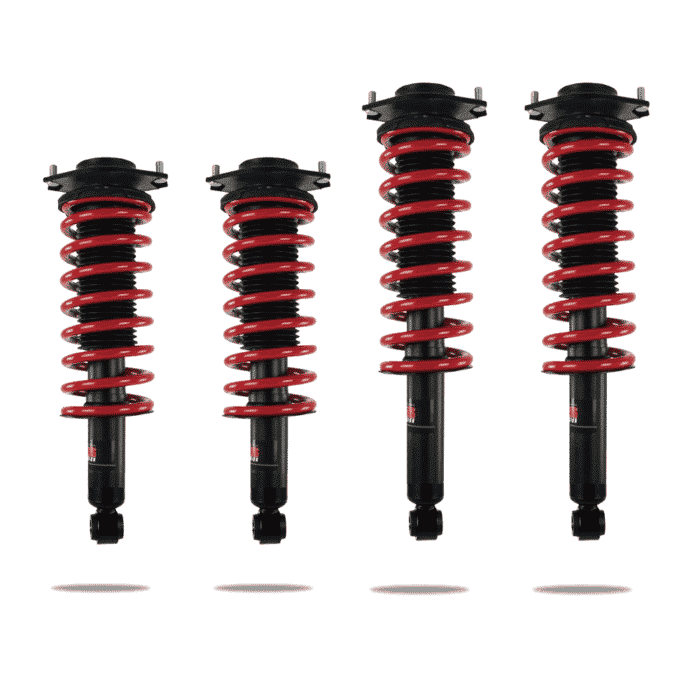
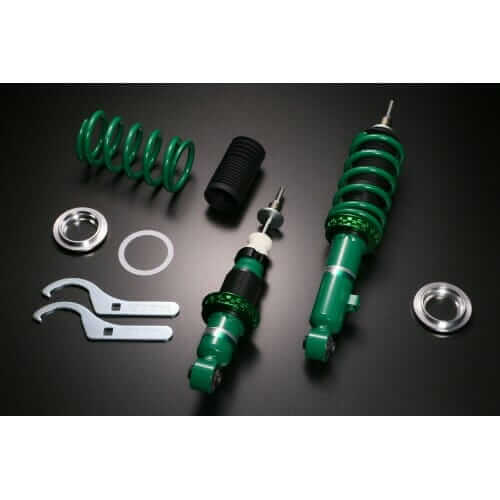
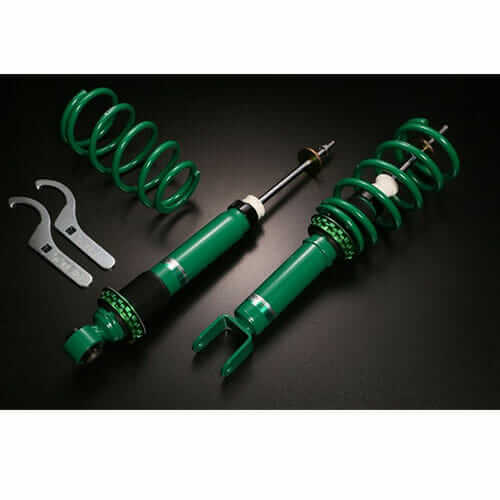
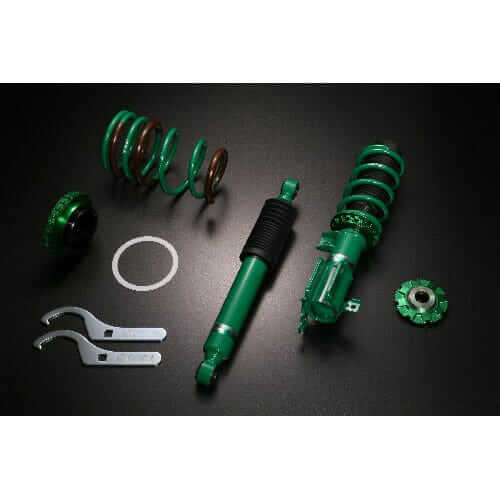
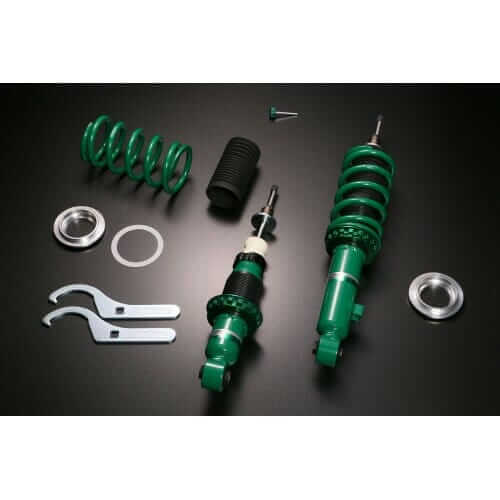
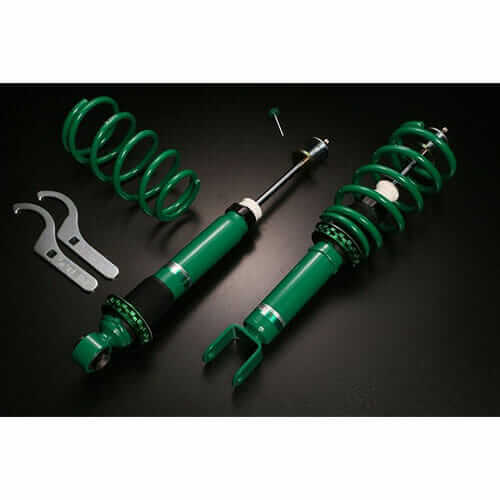
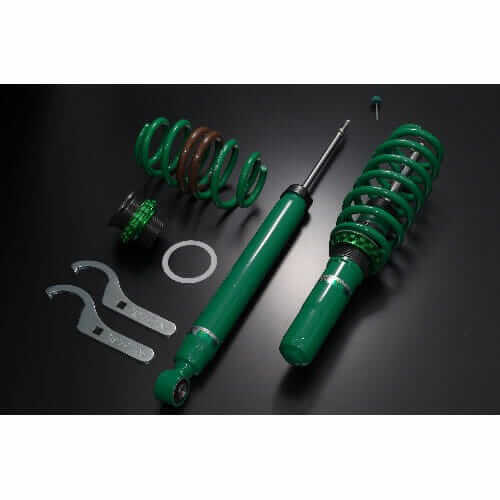
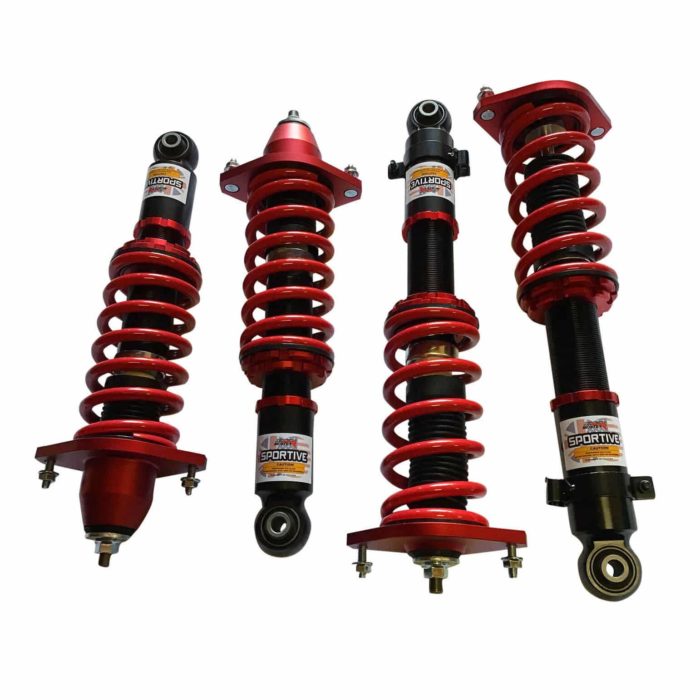

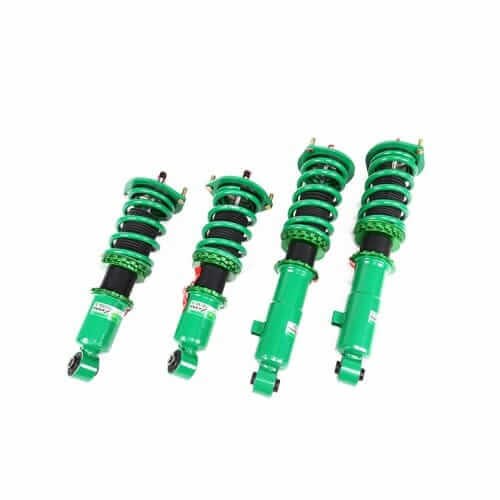

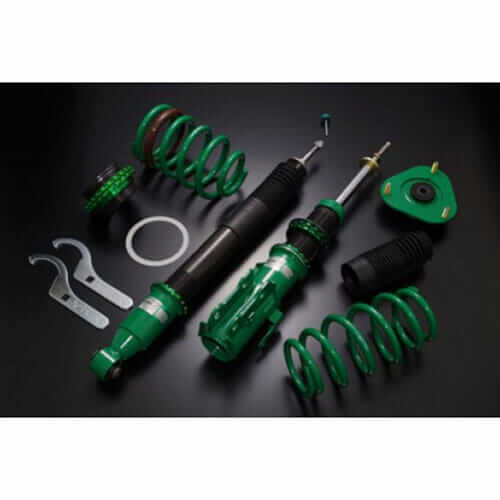

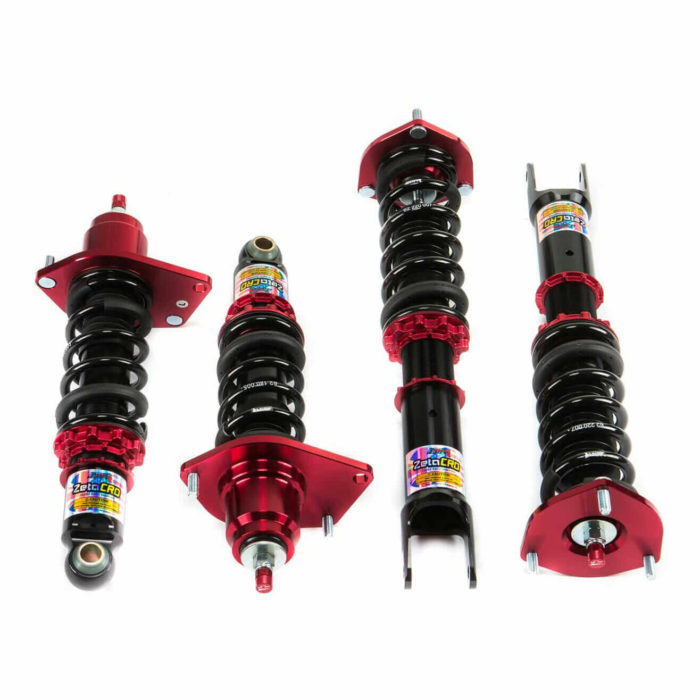
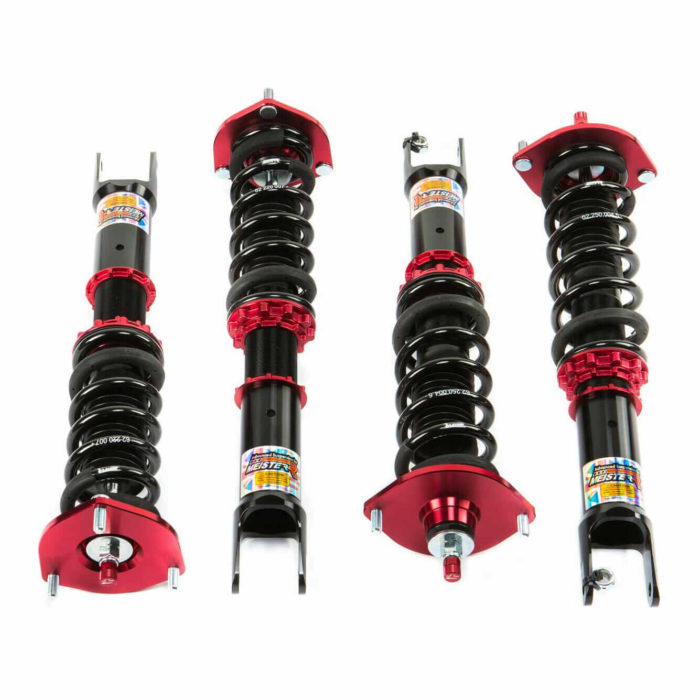
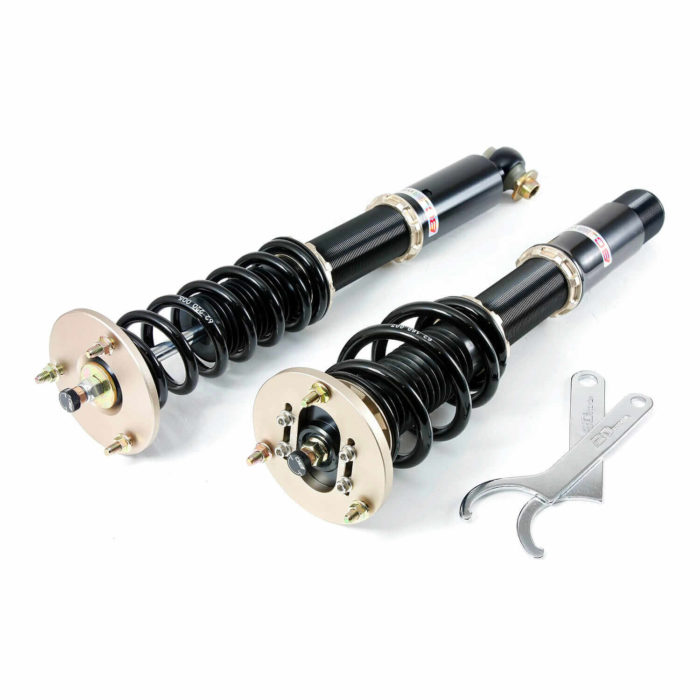


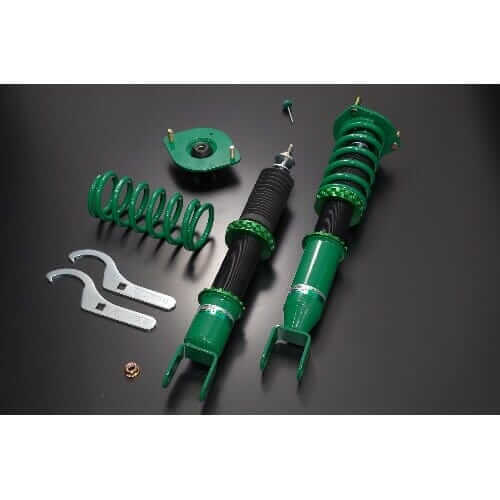

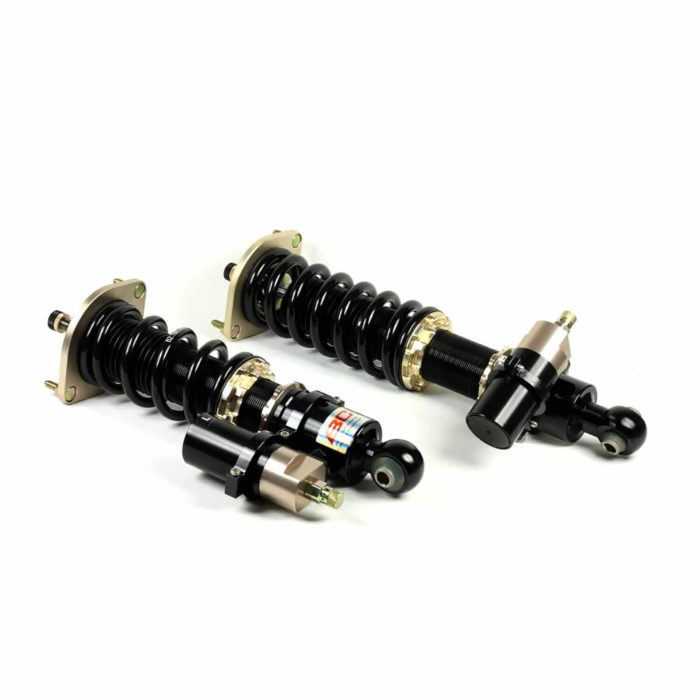

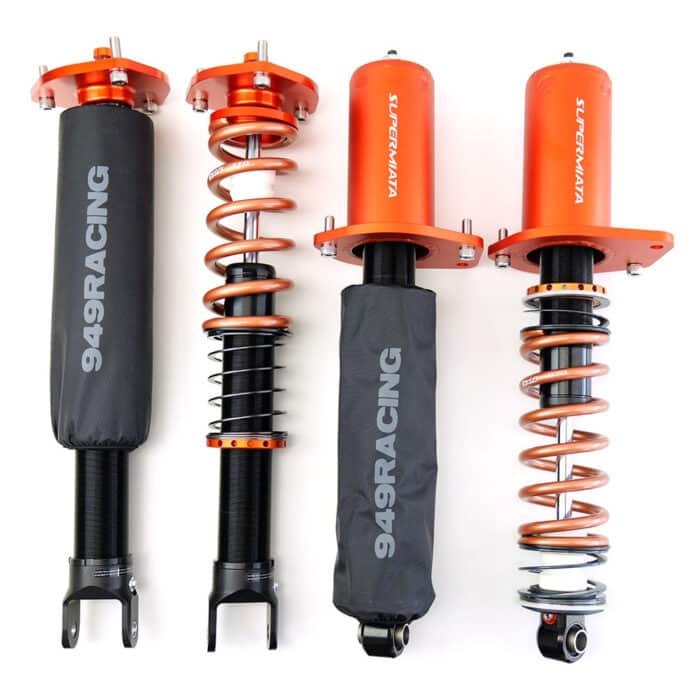
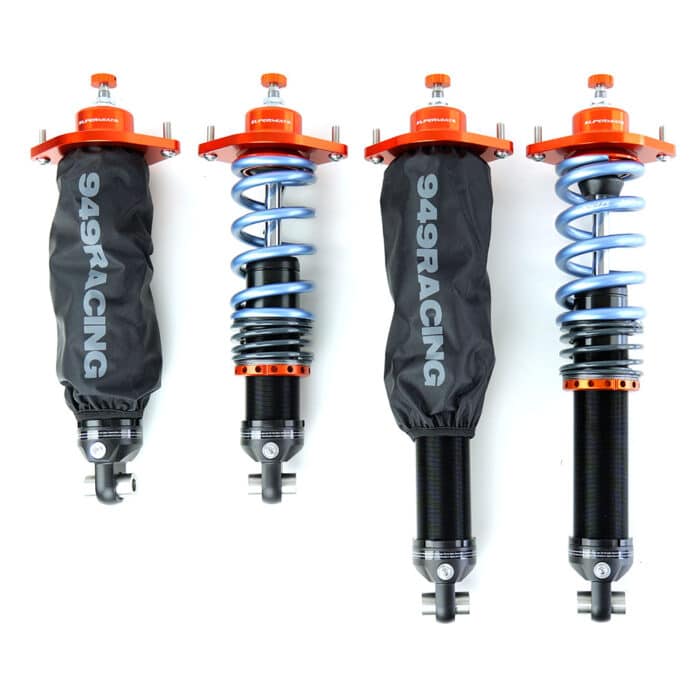
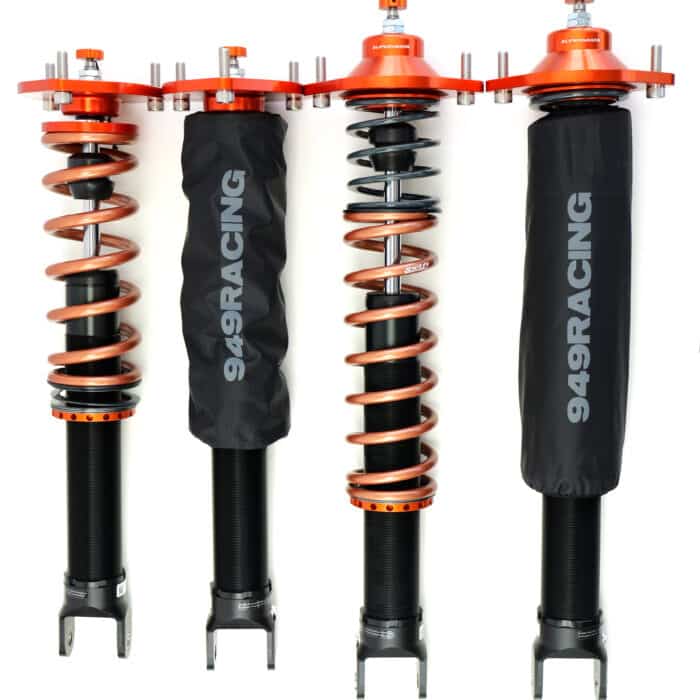
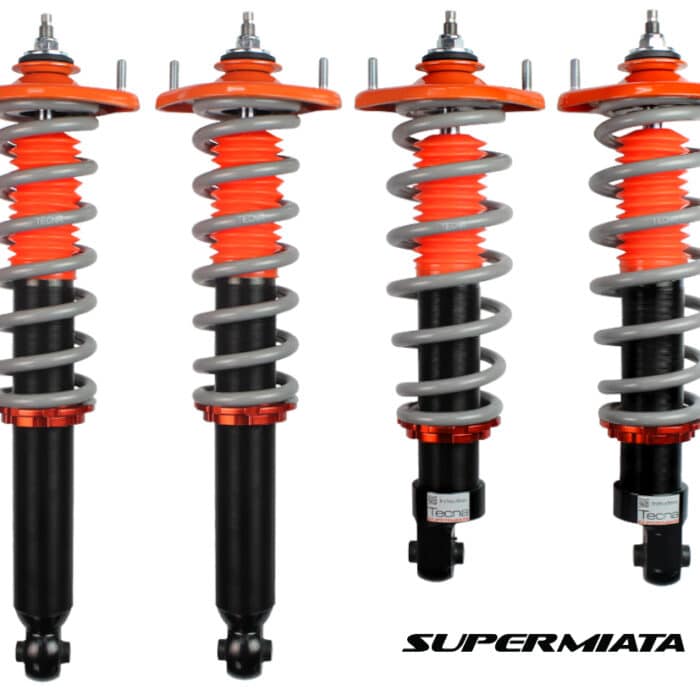
3 comments
I can’t take this seriously with Xida not on the list
I’ll get right on that!
Very informative article, thank you.